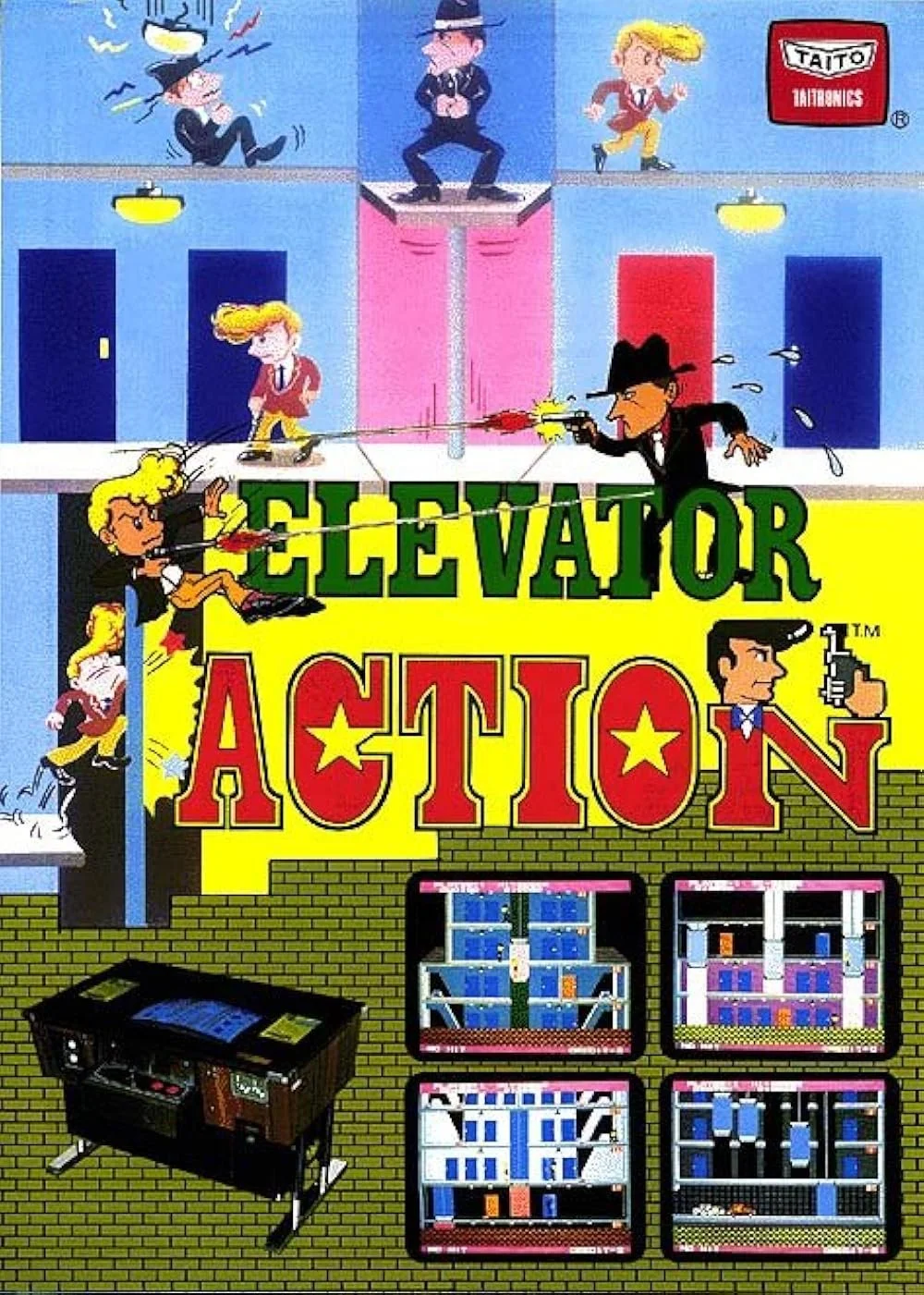Riding High with Retro Style: Remembering "Elevator Action" (1983)
In the world of vintage video games, few titles spotlight elevators quite like Elevator Action. Released in 1983 by Japanese developer Taito, this spy-themed arcade classic turned elevators into strategic gameplay tools and helped define what made early arcade action so addictive. At Olympic Elevator, we appreciate more than just real-world vertical transportation. So today, we’re taking a nostalgic look at the game that turned elevators into the stars of the show.
The Premise: Spy Work Meets Vertical Strategy
In Elevator Action, you play as Agent 17, also known as Otto, a secret agent infiltrating a high-rise building. Your mission is to enter through the roof, descend 30 stories, collect all the classified documents hidden behind red doors, and escape through the basement to a getaway car.
But it’s not as easy as just riding down. Armed enemy agents emerge from blue doors, elevators stop and start at the worst times, and danger is around every corner. You have to shoot, duck, kick, and outsmart your opponents, all while manipulating the building's elevator system to your advantage.
Gameplay Mechanics That Broke Ground
Elevator Action was a unique blend of platforming, action, and strategy. What set it apart was its use of elevators and escalators as key gameplay features. This wasn’t just background decoration. Elevators helped you dodge enemies, trap opponents, and reach new levels of the building.
Players controlled Otto using a four-way joystick and two buttons, one for shooting and one for jumping or kicking. While simple on paper, the mechanics allowed for clever tactics, like shooting out ceiling lamps to darken rooms or crushing enemies with elevator cars.
Environmental interactivity was rare in 1983, but Elevator Action embraced it. Shooting out a light wasn’t just flashy; it made it harder for enemies to see and shoot accurately. It introduced players to a world where the building itself could be part of the strategy.
A Building Full of Innovation
Each level in Elevator Action became more complex as you moved down. Enemies became faster and smarter. Elevator patterns grew harder to predict. Missing a red door meant riding all the way back up, which could be fatal.
Adding to the pressure was a built-in timer. If you took too long, an alarm would go off, making enemies more aggressive and slowing elevator function. This created an urgency that pushed players to take risks while keeping an eye on their route.
If you reached the basement without collecting all the documents, the game sent you back up to find what you missed. The message was clear: complete your mission, or keep climbing.
Legacy and Influence
While Elevator Action never reached the fame of Pac-Man or Donkey Kong, it carved out a lasting place in gaming history. Its unique mechanics earned it a loyal fan base and multiple re-releases.
The game was ported to a variety of home systems, including the NES, Commodore 64, ZX Spectrum, and Game Boy. It even landed on the Wii Virtual Console and was included in retro game collections for PlayStation and Nintendo Switch.
Its influence also led to several sequels:
Elevator Action Returns (1994): A faster-paced, side-scrolling sequel with enhanced graphics and three playable characters.
Elevator Action EX (2000): A Game Boy Color update with multiple agents and new level designs.
Elevator Action Old & New (2002): A Game Boy Advance re-imagining with both the original game and a modernized version.
Elevator Action Deluxe (2011): A stylized, downloadable title for PlayStation 3 that added quirky graphics and multiplayer features.
Even today, the original game continues to be referenced in pop culture and retro game circles.
Why It Still Matters
What made Elevator Action stand out in 1983 still holds up today: smart design, tight controls, and the creative use of a setting most people wouldn’t think of as exciting. Elevators were more than background props. They were the puzzle, the weapon, and the escape route all in one.
It also stands as a reminder that even small design choices can elevate (pun intended) an experience. By putting a familiar everyday feature at the center of game play, Taito created something both memorable and innovative.
A Fun Nod from Olympic Elevator
At Olympic Elevator, we’re all about getting people where they need to go safely and efficiently. While our elevators don’t need to dodge secret agents or dim the lights with gunfire, we do appreciate the clever ways Elevator Action brought vertical travel to life.
It’s a fun reminder that elevators, whether in 8-bit arcades or real-world buildings, are key to connecting people and places, and sometimes even helping a secret agent escape with vital intel.










